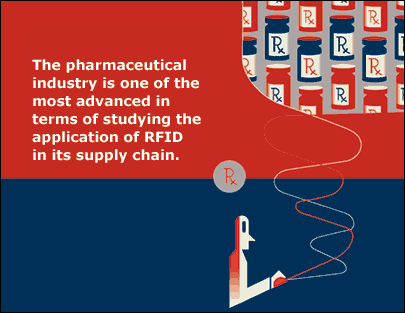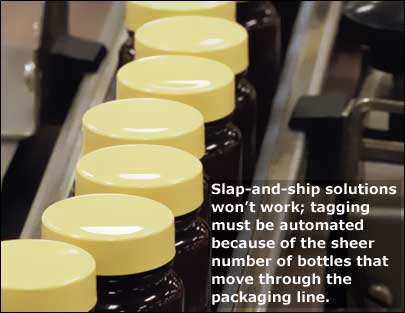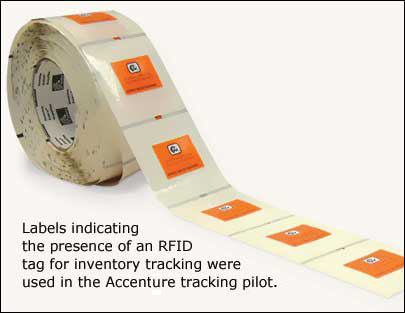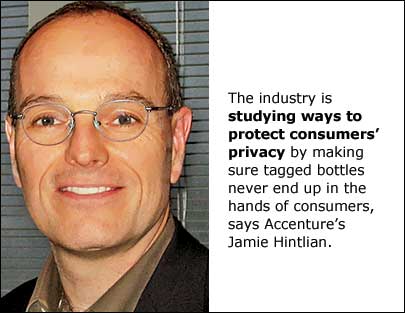Jun 01, 2005A customer became suspicious after buying a few bottles of Viagra, the leading treatment for erectile dysfunction, from a Glendale, Calif., pharmacy in June 2004. The labels on the bottles looked slightly off-color, and the logo was odd. After breaking open a tablet, the customer found unusual blue speckles inside; real Viagra tablets have a light blue coating on the outside and are solid white in the center. Tests by Viagra's manufacturer, Pfizer, headquartered in New York City, confirmed that the tablets were fake.
For Pfizer, the stakes were tremendous. Viagra has a 70 percent worldwide market share in its class of prescription drugs, which amounted to $1.68 billion in sales in 2004. So far this year, authorities around the world have confiscated several million counterfeit tablets. The growing illegal trade in knockoff Viagra by unregulated Internet pharmacies, organized crime and overseas bootleggers—which often beckon consumers through unsolicited e-mail—poses potential risks to customer health.
And that was a risk Pfizer couldn't measure in dollars and cents. The company announced in November that it would start adding RFID tags to cases and packaging of Viagra as part of a multipronged, multimillion-dollar anticounterfeiting campaign. It also filed suit against online dealers it claims are peddling fake Viagra.
Pfizer is one of a growing number of pharmaceutical companies in the United States and Europe (see "Europeans Try to Track and Trace Pharmaceuticals" on page 5 of this article) that are turning to RFID technology to crack down on the worldwide trade in fake medicines. The World Health Organization estimates that the sale of counterfeit prescription drugs is potentially a $26 billion-a-year illegal business.
The pharmaceutical industry is one of the most advanced in terms of studying the application of RFID in its supply chain—and the first to focus on tagging at the item level. One of the reasons is that it has been under state mandates and the threat of federal rules to secure the supply chain from counterfeit products. Those mandates don't apply just to manufacturers but to the entire pharmaceutical pipeline, which comprises drugmakers, distributors and wholesalers, and the drugstores and hospital pharmacies that actually fill prescriptions.
The $216 billion-a-year pharmaceutical pipeline in the United States has long been the world's most secure market for medicines. But a series of high-profile incidents in 2002 and 2003 involving counterfeit drugs sold in the United States convinced the U.S. Food and Drug Administration (FDA)to take action. An FDA task force issued a report, "Combating Counterfeit Drugs," in February 2004, in which it stated that RFID "appears to be the most promising approach to reliable product tracking and tracing." The report stopped short of proposing regulations, but it spurred a number of feasibility studies and pilot projects by indicating that authentication and tracking technologies realistically could be in place through the U.S. pharmaceutical supply chain by 2007. Last November, the FDA published an online "Compliance Policy Guide" that lifted a range of labeling and manufacturing practice regulations that had been hampering RFID trials.
The FDA endorsement emboldened several states—California, Florida, Nevada and Virginia, among them—to adopt laws requiring some form of a pedigree for every pharmaceutical product sold in the state. That pedigree would record the chain of custody of drugs, from production to dispensing. Proponents believe that these records will improve patient safety by allowing wholesalers and retailers to quickly identify, remove and report suspected phony drugs and better target recalls. But distributors are concerned that 50 different states might develop 50 different rules that would end up being a compliance nightmare for the industry, and they are lobbying state and federal lawmakers to discourage such state-by-state rules.
Manufacturers, distributors and retailers see RFID as a way to create an electronic pedigree, by placing tags with an Electronic Product Code, or unique serial number, on every bottle and vial of prescription medication. The tags could be read and the validity of the drugs authenticated at every step in the pharmaceutical supply chain.
The pharmaceutical industry is also getting pushed into RFID by mandates from Wal-Mart, which has a pharmacy division, and the U.S. Department of Defense (DOD). The retailer and DOD have ordered their largest pharmaceutical suppliers to start tagging products as a cost of doing business.
Players at each stage in the pipeline have been participating in a series of group and individual RFID pilot programs. Accenture coordinated an RFID pilot, beginning in October 2003, in which a number of manufacturers (Abbott Laboratories, Barr Laboratories, Johnson & Johnson, Pfizer and Procter & Gamble), distributors (Cardinal Health and McKesson) and retailers (CVS and Rite Aid), as well as the Healthcare Distribution Management Association (HDMA) and the National Association of Chain Drug Stores (NACDS) cooperated to tag, ship, receive, handle and trace nearly 13,500 prescription drug bottles. The project ended in late April, and Accenture is continuing to work with the participants individually.
The point of the pilot was to assess the business value of RFID technologies, standards and processes and to prove that RFID could be implemented in the pharmaceutical supply chain. Participants not only gained hands-on experience with the technology—wrestling with issues such as where to place the tags on drug bottles, how to pack a case and how to configure readers—but actually developed designs that some participants are utilizing in their own pilots.
But many in the industry acknowledge that there remain several challenges, including issues involving data sharing between trading partners and developing standards for the industry. Bob Celeste, director of action groups for EPCglobal US, says the pharmaceutical industry, which is actively participating in the Healthcare and Life Sciences Business Action Group, is expected to unveil to the technical community, possibly this June, how RFID-tagged pharmaceutical products will move through the supply chain, how data will flow and the kind of environment in which the tags will operate. After that, the group will work on such issues as how information will be shared between trading partners.
Drugmakers Test Item-Level Tagging
The FDA's endorsement of RFID technology coupled with a mandate from Wal-Mart that impacted manufacturers of Schedule II narcotics spurred Purdue Pharma, based in Stamford, Conn., to start experimenting with RFID tagging. In November 2004, Purdue Pharma's production facility in Wilson, N.C., began shipping individually tagged bottles of OxyContin, a Schedule II painkiller, to Wal-Mart. It became the industry's first company to tag individual bottles of pills on the assembly line, rather than resorting to a slap-and-ship operation.
Pfizer's goal is to thwart counterfeiting by applying high-frequency 13.56 MHz RFID-tagged labels to Viagra bottles on the company's assembly line in France by the third quarter of this year. Cases and pallets will also be tagged, but with ultra-high-frequency 915 MHz tags. (The case and pallet tags will be tested in France at 866 MHz because France reserves the 915 MHz frequency for military use.) Pfizer expects to be shipping these products by year's end to some of its U.S. distributors.
Pfizer is also planning to have a 2-D bar code—it's similar to a UPC code but can contain a unique serial number for each bottle and is harder to counterfeit—placed on Viagra bottles during the assembly process. "The primary reason was for backup in case the RFID tag failed," says Peggy Staver, Pfizer's director of trade product integrity. "However, based on where we are in the transition, there is a lot more discussion about 2-D bar codes to mass-serialize items. That also gains us that mass benefit, but it's more mature and costs less." The one significant disadvantage is that the 2-D bar code needs to be hand scanned to get the results.
"Our plan here is to gain this experience with Viagra," says Staver. "Once we're done with Viagra, we'll see what's happening in the industry and decide whether to move on to other products."
Other U.S. companies that have been tagging drug supplies or undertaking pilots include Abbott Laboratories, Barr Laboratories and Johnson & Johnson. Pharmaceutical manufacturers are finding that tagging individual bottles of medicine poses a number of unique challenges, including where to place the tags on the vials so that all tags can be read within a case or pallet. And they haven't yet done pilots to test the readability of RFID tags on liquid medication. Also, slap-and-ship solutions won't work; tagging must be automated because of the sheer number of bottles that move through the packaging line.
Another looming question is whether the electromagnetic energy from RFID technologies will have any ill effects on drug efficacy or potency. The FDA asked manufacturers to share the results of product testing on this matter, and the pharmaceutical industry has been complying with this request. Thus far, no adverse effects have been found on tested products—which have all been in tablet form. The FDA says this issue may have greater importance in the tagging of liquids and biological products.
Distributors Seek E-Pedigrees
Once RFID-tagged pharmaceuticals are produced and packaged, they will be most often sold to distributors or wholesalers. Distributors may ship whole cases to retail drug chains or, more often than not, they may have to open a case and distribute only a certain number of vials to a chain and the rest to a hospital or a series of other healthcare facilities. Distributors often pack a variety of different prescription medications into "totes"—plastic bins that can be securely sealed. Every day, distributors deliver some of the 9 million different prescription drugs sold in the United States to more than 130,000 retail pharmacies, hospitals, clinics and other providers scattered through the 50 states.
Pharmaceutical distributors have to meet new state regulations to provide some type of pedigree documenting the chain of command, lot number and expiration date of each drug sold in the state. A Florida law requires that these pedigrees be provided to pharmacists on paper by July 1, 2006. A similar California law goes into effect in January 2008.
The HDMA, which has the nation's 46 full-service healthcare distributors as members, has been urging states to accept electronic documentation for these pedigrees. RFID "holds the most promise" for helping distributors provide these pedigrees, because readings would generate electronic data every time the product changes hands, says Lisa Clowers, HDMA's senior vice president of industry relations. In addition, RFID would help distributors track the lot numbers and expiration dates of every pharmaceutical product they sell. It will take a "huge system-wide change" to comply, says Clowers, because distributors do not track that information today.
Cardinal Health—which, along, with AmerisourceBergen and McKesson, distribute more than three-quarters of the pharmaceuticals sold in the United States—repackages pharmaceuticals for manufacturers. The company is piloting RFID in combination with 2-D bar codes in both its packaging and warehouse operations. The pilot will include tagging items on the assembly line, reading tags as items move into the distribution operations and then reading the tags when the items are shipped to Cardinal Health's subsidiary, the Medicine Shoppe Pharmacies.
"Our main goal for [deploying RFID] will be initially strictly on the regulatory side to achieve compliance; the electronic track and trace that will reduce the risk of counterfeit drugs," says Gary Dolch, executive vice president of quality and regulatory affairs for Cardinal Health. "It's just that until RFID is adopted across the entire pharmaceutical spectrum—that includes tablets, injectables, solutions and both branded and generic items—we will not be able to see the efficiencies. Its ability to offer an economic advantage in our business is extremely limited."
Distributors are struggling with technical and business process issues that must be overcome prior to widespread RFID adoption. They need to configure antennas and readers at distribution centers so that all tagged pallets, cases and individual bottles can be read as they are brought in through the door of a loading dock.
Distributors also need to address a "cultural business change," says Clowers. HDMA is urging its members to face the fact that, if manufacturers are going to handle the bulk of tagging pharmaceuticals, distributors will need to share with the manufacturers some of the data they have traditionally kept about who they sell to, how much and what products. Some distributors fear that by sharing the information, they could lose customers because the manufacturers could sell directly to retail chains, but Clowers maintains that distributors provide far more service by delivering what pharmacies want on a daily basis.
Drugstores Grapple With Costs
Drugstore chains are looking at RFID to enhance compliance with the new state pedigree regulations, although in Florida, the CVS and Walgreens pharmacy chains and the trade association National Retail Federation have joined forces to try to head off the pedigree law, which would require that each pharmacy receive and store the paper pedigree. That could cost drugstores millions of dollars in paperwork, document management and other related expenses. Jamie Hintlian, a partner in Accenture's Health and Life Sciences practice, says RFID could help pharmacies achieve regulatory compliance.
Aside from Wal-Mart, retail pharmacy chains have stopped short of issuing tagging mandates to their suppliers, but they have been actively participating in pilot programs to test RFID technology in their supply chain. In addition, the technology has the potential for in-store use to help drugstores better manage inventory and gain operational efficiencies, says Steve Perlowski, vice president for regulatory affairs of the NACDS, which represents the nation's leading chain pharmacies and suppliers. NACDS members operate more than 32,000 pharmacies and fill more than 2.1 billion prescriptions yearly.
CVS, for example, contracted with Checkpoint Systems in June 2004 to outfit all 5,300 CVS stores with Checkpoint's Liberty PX antennas, as part of a digital RF-Electronic Article Surveillance solution. EAS technology, which is already employed by retailers to combat theft, would allow for "source tagging" of retail items in drugstores. It would help store managers curtail shoplifting, replenish shelves, and make sure vitamins and other goods are removed from shelves before their sell-by dates.
But pharmacy chains are concerned about the cost of outfitting each of their stores with antennas and readers to receive tagged drugs. Unlike a pharmaceutical manufacturer that can apply a tag and raise the price of the drug to cover the cost, more than 90 percent of prescriptions are under negotiated contract for reimbursement to drugstores. "An insurance company is not likely to say, 'OK, because you have built all of this to take care of state or federal regulations, we're going to raise your reimbursement,'" says Perlowski.
The pharmaceutical industry is studying ways to protect consumers' privacy by making make sure RFID tags are removed at the pharmacy, so tagged bottles never end up in the hands of consumers, says Accenture's Hintlian. Pharmacists usually remove bulk medication from the bottles they receive from manufacturers and distributors and dispense tablet medication to patients in industry-standard amber vials. But a pharmacist could use a tagged bottle and the last few tablets in it to fill a prescription. Pfizer, for one, is experimenting with a tear-off RFID label similar to coupons found on certain products at the supermarket, to guard against such mistakes.
Beyond Safety and Mandates
While few would argue that RFID has the potential to fight counterfeiting and ensure patient safety, the question remains: Can RFID provide cost-reducing benefits to manufacturers, distributors and retailers in the pharmaceutical supply chain?
The cost benefits have yet to be proved. The long-term promise of RFID is that data could be gathered and shared between trading partners to improve inventory control, reduce discrepancies between manufacturers and distributors, facilitate product recalls or withdraw expired products from the supply chain, and cut down on labor costs in the warehouse. But many of those returns on investment will be achieved only if all products in the supply chain and all trading partners rapidly convert to RFID technology. The efficiencies won't be gained if companies have to support dual technologies: RFID and 2-D bar codes.
"We haven't taken this forward and promised management all sorts of operational benefits and savings," says Pfizer's Staver. "In fact, we've said there would be none. It's not an ROI-driven project for us."
An HDMA study published in November 2004 entitled "Adopting EPC in Healthcare: Cost and Benefits" said there were financial gains to be made through widespread incorporation of RFID into the supply chain. It estimated that pharmaceutical manufacturers stand to gain $500 million to $1 billion annually by adopting RFID technologies. For distributors, that annual gain would amount to $200 million to $400 million. The report, based on research by A.T. Kearney, said most benefits would be realized by bettering the accuracy of claims and deductions and improving inventory and warehouse efficiency.
The report also spelled out the startup costs of implementing RFID, including systems integration, hardware, tags and software. For large manufacturers, those costs were pegged to range between $15 million and $20 million. For a large distributor, the startup cost of RFID infrastructure and software would range between $9 million and $20 million.
Further studies are under way to determine whether RFID technology can provide cost-reducing benefits. But for now, many manufacturers, retailers and the distributors caught in the middle view RFID as a necessary cost-dispensing counterfeit medicine is bad for business. If a patient gets ill from a counterfeit product and a manufacturer isn't held liable by authorities, the company could still suffer significant damage to its brand name. And both the manufacturer and the retailer that sold the tainted drug could lose sales from negative publicity.
"Certainly, brand protection is important to us," says Staver, "but our primary driver is patient safety." With RFID in the pharmaceutical supply chain, Pfizer and other companies hope to address both issues.
Europeans Try to Track and Trace Pharmaceuticals
The Italian government will soon unveil the first phase of a drug-tracking system designed to trace individual bottles of prescription medicine-using bar code labels that have unique serial numbers—from production to the consumer. It will require drug manufacturers, wholesalers and retail stores to report sales data to the Italian Ministry of Health within 24 hours of a transaction. Health authorities will compare all the sales data—as well as compare the data with epidemiological information—to help prevent counterfeiting, theft and other actions that could threaten public health.
But Italian pharmaceutical industry groups complain that the program—which is based on a dual bar coding system they call the bollino—will be difficult for the industry to implement because high-volume bar code readers haven't been developed yet to scan and capture thousands of serial numbers per hour. Using the current bar code scanners would slow productivity. A working group made up of government and industry representatives will be formed later this year to look into subsequent phases of implementation and possible tests of alternative technologies, including RFID.
"If you want to really monitor along the supply chain, every transaction, I'm convinced the bar code technology is not the correct one," says Stefano Novaresi, chief operating officer of the Comifar Group, Italy's largest drug wholesaler, and a board member of the Associazione Distributori Farmaceutici, the Italian wholesaler's association. "In this sense, a technology like RFID, when the performance in terms of reading speed and error rate will be adequate, could be a concrete answer to the problem."
Nevertheless, the Italian government's plan to track pharmaceuticals is the most advanced in Europe. In other countries, the pharmaceutical industry, which is concerned about the possible impact of counterfeit products on public health and dilution of their brands, is taking the reigns.
GlaxoSmithKline, based in Middlesex, England, has plans within the next year to put RFID tags on certain pharmaceutical products it deems susceptible to counterfeiting or theft. GSK has identified several top priority drugs as candidates for its pilot, including Combivir, Epivir, Retrovir, Trizivir, Ziagen and Zofran. GSK has already started tagging some pallets and cases of consumer healthcare products that it ships to Wal-Mart's distribution center in Texas and to Metro, a German retailer.
In March, British technology provider Aegate reported that a three-month trial aimed at validating prescription drugs at the point of dispensing was successful. During the pilot, 180,000 bottles of medicine—about 20,000 different products—were tracked from their manufacture to their dispensing in 44 pharmacies across England and Wales. The bottles were labeled with a serial number, either on a bar code or on an RFID tag. Pharmacists checked that the numbers matched up with those on a secure database before selling drugs to customers. Six drug manufacturers participated, including Merck Generics UK, Merck Pharmaceuticals, Novartis, Schering Health Care and Solvay.
Two additional European pilots will start later this year. Both projects are sponsored by a division of the GS1—the successor to the Association for European Article Numbering (EAN), the counterpart to the U.S. UPC code. One pilot is an extension of the GS1 European Healthcare Initiative (EHI) to spread standard ways of identifying and bar coding pharmaceuticals throughout Europe. The second pilot will track both branded and generic drugs through the supply chain using bar codes and EPC numbers at all levels of packaging, according to John Jenkins, an EHI spokesperson. A global pharmaceutical manufacturer—Jenkins declined to provide the name of the company—will apply the bar code and RFID labels by machine, and the products will be traced throughout the supply chain.




